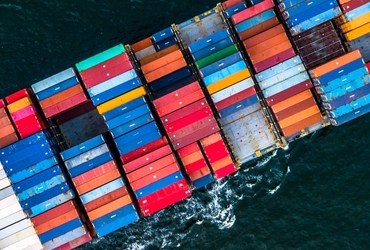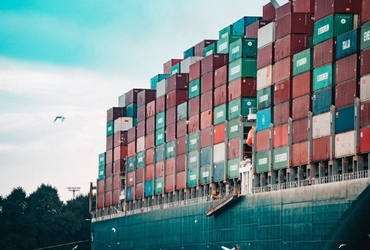Trump Tariff Tracker: A Comprehensive Timeline of U.S. Trade Policy in 2025



Updates and Relevant Publications
- October 30, 2025 – The U.S. Senate passed a 51–47 vote to rescind the national-emergency basis for broad reciprocal tariffs, signaling heightened legislative scrutiny of blanket, non-sector specific tariffs.
- October 27, 2025 – The U.S. and China reached a framework agreement suspending the planned 100% tariffs on Chinese imports that were due 1 Nov 2025; China committed to resume significant agricultural purchases and the U.S. agreed to maintain suspended tariff escalation until at least 10 Nov 2026 (pending final ratification).”
Shipping and freight forwarders: These developments reduce immediate escalation risk for Asia-US routes, but volatility remains as implementation details are still being negotiated.
- October 18, 2025 – Presidential Proclamation under Section 232 finalizes new tariffs starting Nov 1, 2025: 25% on medium- and heavy-duty trucks and key truck parts, and 10% on buses. The proclamation cites national security, creates a tariff offset/credit for U.S.-assembled trucks and engines through Oct 31, 2030, and confirms that certain USMCA-origin content may receive preferential treatment..
- October 16, 2025 – Federal Register notice implements 100% tariffs on specified ship-to-shore cranes; further changes proposed for additional cargo-handling equipment.
- October 10, 2025 – The Administration announced that it intends to impose an additional 100% tariff on essentially all Chinese imports starting Nov 1, 2025 “or sooner,” and to trigger new export controls on “critical U.S.-made software.” This is a policy announcement; full-scope implementation across all Chinese goods has not yet been finalized in the Federal Register as of Oct 29, 2025.
- October 10, 2025 – USTR finalized 100% duties on China-linked ship-to-shore cranes, intermodal chassis, and certain cargo-handling equipment under Section 301. Those duties start taking effect in early November 2025. USTR also proposed further port-security and fee changes (vehicle carrier fee shift to weight/“net tons,” LNG license tweak).
- September 29, 2025 – Proclamation issued imposing Section 232 tariffs on timber and lumber products.
- September 26, 2025 – New Section 232 tariffs announced on pharmaceuticals, furniture, cabinets, and trucks, effective November 1, 2025, including medium- and heavy-duty trucks. (Confirmed by the October 17–18, 2025 Presidential Proclamation, which sets 25% on medium-/heavy-duty trucks & parts and 10% on buses effective Nov 1, 2025.)
- August 29, 2025 – A federal appeals court held that the President’s “reciprocal” and “fentanyl” tariffs exceeded his authority under the International Emergency Economic Powers Act (IEEPA). The court stayed its ruling to allow appeal. The Supreme Court has now consolidated the challenges (Learning Resources v. Trump / Trump v. V.O.S. Selections) and set oral argument for early November 2025. Congress is also beginning to push back legislatively.
- August 29, 2025 – The US ended the $800 de minimis exemption for all countries; global posts/carriers adjusted service in response. This global end of the $800 de minimis threshold is now in force and is already reshaping small-parcel cross-border e-commerce, because every parcel now requires full customs treatment.
- August 1, 2025 – 50% copper tariff takes effect, raising concerns in electronics and renewable energy.
- June 23, 2025 – Expansion of Section 232 tariffs to cover appliances and industrial machinery.
- June 4, 2025 – Steel and aluminum tariffs doubled from 25% to 50%.
- April 9, 2025 – Country-specific reciprocal tariff rates announced; effective August 7, 2025 (after July 9 and august 1 postponements).
- April 2, 2025 – Liberation Day baseline tariff of 10% announced (effective April 5, 2025); de minimis exemption for China/Hong Kong removed.
- March 12, 2025 – Section 232 tariffs reinstated at 25%.
- March 4, 2025 – Tariffs on fentanyl-related imports from China raised to 20%.
- February 1, 2025 – Executive orders impose 25% tariffs on Mexico and Canada; 10% on China.
Introduction
The return of Donald Trump to the White House has reshaped the global trade environment in ways not seen since the tariff battles of 2018–2019. The return of Donald Trump to the White House has reshaped global trade in ways not seen since the tariff battles of 2018–2019. The administration has leaned fully into an “America First” tariff strategy:
- reviving broad “reciprocal” tariffs, now under direct Supreme Court review after lower courts said the President exceeded his authority under the International Emergency Economic Powers Act (IEEPA);
- escalating Section 232 duties on metals, vehicles, and even buses on claimed national security grounds;
- effectively killing the $800 de minimis duty-free threshold for low-value imports worldwide, forcing full customs processing even for e-commerce parcels.
Congress is now openly testing how far this approach can go (for example, the Senate’s Oct 28, 2025 vote to roll back Brazil tariffs), and U.S. allies are preparing countermeasures of their own.
For businesses engaged in cross-border trade, staying ahead of these developments is not just about compliance — it is about survival. This tracker consolidates all major tariff actions through 24 Nov 2025, including the U.S.–China Kuala Lumpur Joint Arrangement (Nov 2025), the one-year suspension of Section 301 shipping/port actions, and broad agricultural tariff exclusions. It blends narrative, tables, and sector notes so trade, sourcing, compliance, and logistics teams can see what is already in force, what is merely announced, and what is being challenged in court or in Congress.
Key Tariff Measures
| Country / Scope | Type & Status | Ad Valorem Rate | Exemptions & Notes | Announced Countermeasures |
|---|---|---|---|---|
| All (baseline) | Reciprocal – Implemented (effective Apr 5, 2025; amended Jun 16, 2025) | 10% baseline | Legal status: Multiple federal courts have ruled that these IEEPA-based “reciprocal” tariffs exceed presidential authority. Enforcement continues only because the rulings are stayed while the Supreme Court hears the consolidated challenges in early November 2025. Update (Nov 14, 2025): Over 200 qualifying agricultural/food items (e.g., coffee/tea, tropical fruits/juices, cocoa/spices, certain meats and fertilizers) are excluded from reciprocal tariffs effective Nov 13, 2025. | N/A |
| All (transshipment) | Transshipment penalty – Implemented (effective Aug 7, 2025) | 40% | Applies in lieu of baseline or country-specific rate. This penalty rate is also tied to IEEPA emergency authority and is part of the same Supreme Court challenge described above. | N/A |
| China | Reciprocal tariff – Implemented at 10% additional duty under EO 14358 / Kuala Lumpur Joint Arrangement (signed Nov 4, 2025) | 10% (reciprocal regime) while heightened PRC rates remain suspended | The planned across-the-board 100% escalation on PRC goods was suspended by the Oct 30–Nov 4 U.S.–China deal. Separate Section 232 metals/auto/copper tariffs remain outside this reciprocal framework | China suspended retaliatory tariffs and rare-earth export controls per the Arrangement |
| India | Country-specific tariff – Implemented (announced Apr 9, 2025; effective Aug 7, 2025 (after postponements)) | 50% | — | Countermeasures under review |
| European Union | European Union – Country-specific tariff – Implemented (announced Apr 9, 2025; effective Aug 7, 2025; updated Oct 7, 2025) | Up to 50% | On Oct 7, 2025, the European Commission proposed slashing tariff-free steel import quotas by ~47% and doubling out-of-quota steel tariffs from 25% to 50%, aligning EU defenses with U.S. metal protectionism. This proposal alarmed UK and other exporters, who warned of an “existential threat” to their steel sectors; final EU implementation is projected for mid-2026 (July 1, 2026) but is not yet in force. UK exporters say they could be hit even harder if Brussels keeps the full 50% rate without a carve-out. | Possible retaliation; UK exports may face additional impact |
| United Kingdom | Country-specific tariff – Implemented (announced Apr 9, 2025; effective Aug 7, 2025 (after postponements)) | Varies | Section 232 exemptions on certain steel/aluminum | Retaliatory measures possible |
| Mexico | Country-specific tariff – Implemented (effective Feb 1, 2025) | 25% (10% on energy & potash; 0% if USMCA-compliant) | USMCA-compliant goods exempt | — |
| Canada | Country-specific tariff – Implemented (effective Feb 1, 2025) | 25% | USMCA-compliant goods may be exempt | — |
| Japan | Country-specific tariff – Implemented (announced Apr 9, 2025; effective Aug 7, 2025 (after postponements)) | 15% | — | — |
| South Korea | Country-specific tariff – Implemented (announced Apr 9, 2025; effective Aug 7, 2025 (after postponements)) | 15% | — | — |
| Taiwan | Country-specific tariff – Implemented (announced Apr 9, 2025; effective Aug 7, 2025 (after postponements)) | 20% | — | — |
| Vietnam | Country-specific tariff – Implemented (announced Apr 9, 2025; effective Aug 7, 2025 (after postponements)) | 20% | — | — |
| Indonesia | Country-specific tariff – Implemented (announced Apr 9, 2025; effective Aug 7, 2025 (after postponements)) | 19% | — | — |
| Thailand | Country-specific tariff – Implemented (announced Apr 9, 2025; effective Aug 7, 2025 (after postponements)) | 19% | — | — |
| Israel | Country-specific tariff – Implemented (announced Apr 9, 2025; effective Aug 7, 2025 (after postponements)) | 15% | — | — |
| Brazil | Country-specific tariff – Partially rolled back | Baseline 10% reciprocal still applies, but the extra punitive Brazil food/ag layer was removed | Update (Nov 20, 2025): The Administration ended the additional 40% Brazil agricultural tariffs (coffee, beef, juices, sugar, spices, etc.), retroactive to Nov 13, 2025, with refunds for duties paid. | Brazil welcomed rollback; further negotiations ongoing. |
| Turkey | Country-specific tariff – Implemented (announced Apr 9, 2025; effective Aug 7, 2025 (after postponements)) | 10% | Baseline applies | — |
| Bangladesh | Country-specific tariff – Implemented (announced Apr 9, 2025; effective Aug 7, 2025 (after postponements)) | 20% | — | — |
| Cambodia | Country-specific tariff – Implemented (announced Apr 9, 2025; effective Aug 7, 2025 (after postponements)) | 19% | — | — |
| Iraq | Country-specific tariff – Implemented (announced Apr 9, 2025; effective Aug 7, 2025 (after postponements)) | 30% | — | — |
| Laos | Country-specific tariff – Implemented (announced Apr 9, 2025; effective Aug 7, 2025 (after postponements)) | 48% | — | — |
| Lesotho | Country-specific tariff – Implemented (announced Apr 9, 2025; effective Aug 7, 2025 (after postponements)) | 50% | — | — |
| Switzerland | Country-specific tariff – Implemented (announced Apr 9, 2025; effective Aug 7, 2025 (after postponements)) | 39% | — | — |
| Pharmaceuticals (Branded / Patented) | Section 232 – Implemented (effective Oct 1, 2025) | 100% | Exemptions for companies 'breaking ground' or 'under construction' on US manufacturing plants. | — |
| Kitchen Cabinets / Bathroom Vanities | Section 232 – Implemented (effective Oct 1, 2025) | 50% | — | — |
| Upholstered Furniture | Section 232 – Implemented (effective Oct 1, 2025) | 30% | — | — |
| Heavy Trucks | Section 232 – Implemented. Effective Date: Nov 1, 2025. | 25% on medium- and heavy-duty trucks and key truck parts; 10% on buses. | Finalized by Presidential Proclamation issued Oct 17–18, 2025. Justification is national security and freight/mobility resilience. Imports from Canada and Mexico that qualify under USMCA may receive preferential treatment, and U.S.-assembled trucks/engines get a tariff offset/credit (~3.75% of vehicle value) through Oct 31, 2030. This is the first time Section 232 has been applied to an entire heavy vehicle class, not just metals or passenger autos. | — |
| Softwood Lumber | Section 232 – Implemented (effective Sept 29, 2025) | 10% | — | — |
| Pharmaceuticals / Furniture / Cabinets / Certain Other Finished Goods | Section 232 – Implemented Oct 1, 2025. | Up to 100% | Some categories (for example, branded/patented pharmaceuticals that have not yet localized U.S. production) face a 100% tariff, but companies “breaking ground” or “under construction” on U.S. manufacturing can qualify for case-by-case relief. Similar elevated rates (30%–50%) apply to items like upholstered furniture and kitchen/bath cabinetry. These measures are framed as national-security supply-chain localization, not just traditional antidumping protection. | — |
Legal Note: Tariffs imposed under Section 232 (steel, aluminum, copper, trucks/buses, etc.) are grounded in “national security” determinations under the Trade Expansion Act of 1962 and are not affected by the current IEEPA court challenges. By contrast, the broad “reciprocal,” “baseline,” and “transshipment” tariffs imposed via IEEPA emergency proclamations are under direct Supreme Court review right now. Congress has also introduced oversight bills (for example, the bipartisan Trade Review Act of 2025) to limit unilateral tariff powers going forward.
Chronological Timeline of Tariff Actions
February 1, 2025 – Early Executive Orders
The year opened with sweeping executive orders invoking IEEPA to impose 25% tariffs on Mexico and Canada and 10% on China. These moves immediately tested USMCA commitments and sparked legal challenges arguing that the President cannot use emergency powers to unilaterally reset tariff schedules at this scale. Those same challenges are now before the Supreme Court.
March 2025 – Targeted Tariffs on Fentanyl and Metals
On March 4, the administration increased tariffs on fentanyl-related imports from China to 20%, citing national security and public health grounds. Just days later, on March 12, tariffs on steel and aluminum were reinstated at 25% under Section 232, disrupting key supply chains in construction and automotive manufacturing.
April 2025 – Liberation Day and Reciprocal Tariffs
April 2 marked “Liberation Day,” when the U.S. introduced a 10% baseline reciprocal tariff. By April 9, the policy had evolved into a country-specific structure, with higher rates for China (34%) and India (27%). At the same time, the administration eliminated the de minimis exemption for China and Hong Kong, targeting low-value e-commerce shipments. The United States suspended de minimis for all countries effective aug 29, 2025; foreign posts/carriers then changed their services.
May 12, 2025 – Tactical Adjustments
Facing political and industry pushback, the administration reached a temporary tariff truce framework with China. The tariff on Chinese goods was reduced to 30% in this framework, and the effective date for the higher 34% country-specific tariff was ultimately delayed until November 10, 2025. This was a result of recent negotiations in Madrid, where the U.S. and China agreed to a framework to de-escalate tensions by temporarily lowering tariffs. Under this agreement, the U.S. will lower tariffs on Chinese goods to 30%, while China will lower its tariffs on U.S. goods to 10%. This May truce was superseded by the Oct 30–Nov 4 Arrangement, which set the PRC reciprocal rate at 10%.
June 2025 – Escalation on Steel and Aluminum
On June 4, tariffs on steel and aluminum doubled to 50%. By June 23, the scope was broadened to include downstream products such as appliances and machinery. This expansion marked one of the most significant cost shocks of the year, affecting industries from heavy manufacturing to consumer goods.
July–August 2025 – Copper and the End of De Minimis
On July 8, the administration announced a 50% tariff on copper imports, effective August 1. Copper’s role in electronics and renewable energy raised alarm among clean energy advocates. Later that month, on August 29, the global de minimis exemption was eliminated, reshaping the economics of e-commerce and small parcel shipping worldwide.
October 2025
- On October 10, The Administration announced plans for an additional 100% tariff on essentially all Chinese imports starting Nov 1, 2025 (or sooner), and signaled new export controls on “any and all critical U.S.-made software.” This was framed as retaliation for China’s rare earth export controls and broader industrial policy. USTR also moved ahead with 100% tariffs on China-linked ship-to-shore cranes, intermodal chassis, and certain port-handling gear under Section 301, with effective dates in early November 2025.
- Oct 17–20, 2025 – The White House issued a Section 232 Proclamation imposing a 25% tariff on medium- and heavy-duty trucks and core truck parts, and a 10% tariff on buses, effective Nov 1, 2025. The order also created a tariff-credit/offset to encourage U.S. truck and engine assembly through Oct 31, 2030, and outlined special treatment for qualifying USMCA-origin components.
- Oct 28, 2025 – The U.S. Senate voted 52–48 to rescind the Administration’s 40–50% Brazil tariffs (on products like beef, coffee, and orange juice), marking a rare bipartisan challenge to the President’s emergency tariff authority. The House, however, is unlikely to take up that resolution, and the White House has vowed to veto any rollback, so the Brazil tariffs remain in force as of Oct 29, 2025.
November 2025 – China Deal, Section 301 Suspension, and Food Exemptions
- Nov 1–4, 2025 - The U.S. and China finalized the Kuala Lumpur Joint Arrangement. EO 14358 (FR Nov 7) continues the suspension of heightened PRC reciprocal rates and applies a 10% reciprocal duty to PRC goods.
- Nov 10, 2025 - USTR suspended for one year all Section 301 ‘Ships/Maritime’ responsive actions, including U.S. port fees on Chinese-linked vessels and the 100% duties on ship-to-shore cranes and certain cargo-handling equipment (through Nov 9, 2026).
- Nov 13–14, 2025 - EO modifying reciprocal tariff scope removed reciprocal duties on 200+ agricultural/food products not sufficiently produced in the U.S.
- Nov 20, 2025 - EO rolled back the extra Brazil agriculture tariffs, leaving only the baseline reciprocal tariff where applicable.
Sectoral Impacts
Steel and Aluminum
From 25% to 50% within months; EU proposal/plan to lift out-of-quota duties to 50% (announced oct 7, 2025); not fully implemented yet.
Automobiles and Auto Parts
A blanket 25% tariff on autos and auto parts disrupted global supply chains. While exemptions under the USMCA shielded some North American producers, European and Asian exporters were heavily affected.
Copper and Electronics
The copper tariff raised costs across industries tied to electrification and the green transition. For renewable energy and EV sectors, the 50% duty has slowed investment and raised long-term concerns about U.S. competitiveness.
Agriculture & Food Imports
In November 2025, the U.S. excluded 200+ agricultural and staple-food items from reciprocal tariffs (coffee/tea, tropical fruits and juices, cocoa/spices, certain meats and fertilizers). This reduced effective landed costs across multiple origins and was paired with a rollback of the punitive Brazil agriculture tariffs.
E-Commerce and Parcels
The removal of de minimis fundamentally altered international e-commerce. Small parcels, once exempt from duties, now face full customs clearance. This has increased costs, delayed shipments, and forced platforms to rethink their cross-border models.
Legal and Political Context
In August 2025, a federal court ruled that reciprocal and fentanyl tariffs exceeded presidential authority under IEEPA. A stay was issued pending appeal on August 29, 2025, allowing the tariffs to remain in effect but injecting uncertainty into the regulatory environment.
On October 10, 2025, the Administration announced a 100% tariff on Chinese imports. Until an Executive Order, USTR determination, or Federal Register notice specifies scope and start date, treat this as policy direction rather than in-force law. USTR did, however, implement 100% duties on specified ship-to-shore cranes the same day.
Conclusion
The 2025 tariff landscape is no longer just a pricing or sourcing issue — it’s constitutional, political, and operational.
- Operational: Section 232 tariffs on metals, timber, furniture, pharmaceuticals, and now medium-/heavy-duty trucks and buses are either already in force or start Nov 1, 2025, and USTR has locked in 100% duties on critical China-linked port equipment for early November.
- Legal: The Supreme Court will hear arguments in early November 2025 on whether the President can use IEEPA to impose broad “reciprocal” tariffs without Congress. The outcome could invalidate or narrow core pillars of the current tariff regime.
- Political: The Senate’s Oct 28, 2025 vote to rescind Brazil tariffs shows that Congress is actively testing — and may soon legislate limits on — unilateral tariff powers. For logistics planners, procurement, and finance, this means tariffs can jump overnight, but they can also be rolled back overnight by courts or Congress. Contingency planning (alternate suppliers, nearshoring under USMCA rules of origin, and scenario modeling for >25%, >50%, even 100% duties) is now a permanent requirement, not a crisis-only exercise.
Note: The broad “reciprocal,” “baseline,” and “transshipment” tariffs (including the 10% universal baseline and many country-specific surcharges) were found unlawful by lower courts on Aug 29, 2025, on the grounds that IEEPA does not give the President unlimited tariff power. Those rulings are stayed while Oral arguments were heard on Nov 5, 2025. The stay remains in place, so IEEPA reciprocal/baseline tariffs continue to be collected while the Court deliberates; a decision is expected in the 2025–26 term (likely by mid-2026).
References
- Trump 2.0 Tariff Tracker – Trade Compliance Resource Hub
- Navigating International Trade – Reed Smith
- Trump Tariff Updates – Lexology
- Tariffs in the Second Trump Administration – Wikipedia
- Liberation Day Tariffs – Wikipedia
- Trump Tariffs and Trade War – Tax Foundation
- Tariff Tracker: Where Do President Trump’s Trade Proposals Stand? – Investopedia
- V.O.S. Selections, Inc. v. Trump — Opinion, CAFC, August 29, 2025
- Executive Order 14326 — Further Modifying the Reciprocal Tariff Rates (July 31, 2025)
- Presidential 2025 Tariff Actions: Timeline and Status (CRS Report)
- US will impose additional 100% tariff on Chinese imports from November, Trump says
- Trump announces new 100 percent tariffs on China
- Trump threatens tech export limits, new 100% tariff on Chinese imports starting Nov. 1 or sooner
- USTR Modifies Certain Aspects of Section 301 Ships Action and Proposes Further Modifications to the Action
- Notice of Modification and Proposed Modification of Section 301 Action: China’s Targeting of the Maritime, Logistics, and Shipbuilding Sectors for Dominance
- Adjusting Imports Of Medium- And Heavy-Duty Vehicles, Medium- And Heavy-Duty Vehicle Parts, And Buses Into The United States
- Fact Sheet: President Donald J. Trump Addresses the Threat to National Security from Imports of Medium- and Heavy-Duty Vehicles, Parts, and Buses
- Executive Order 14324 — Suspending Duty-Free De Minimis Treatment for All Countries (Federal Register)
- Executive Order 14324 — Suspending Duty-Free De Minimis Treatment for All Countries (White House)
- Notice of Implementation of the President’s Executive Order 14324 — Suspending Duty-Free De Minimis Treatment for All Countries
- U.S. Senate Roll Call on Brazil Tariff Resolution (Oct 28, 2025) – bipartisan 52–48 vote to rescind Brazil tariffs
- USTR Federal Register Notice (Oct 16, 2025) – 100% duties on PRC-linked ship-to-shore cranes and cargo-handling equipment; Section 301 maritime/port security action
- White House Fact Sheet / Presidential Proclamation (Oct 17–18, 2025) – Section 232 tariffs on medium- and heavy-duty trucks, truck parts, and buses, effective Nov 1, 2025
- Supreme Court docket for Learning Resources v. Trump / Trump v. V.O.S. Selections, Inc. (oral argument first week of Nov 2025)
- European Commission steel safeguard proposal (Oct 7, 2025) – 50% out-of-quota tariff, 47% quota cut, UK impact
- Federal Register – Executive Order 14358: Modifying Reciprocal Tariff Rates Consistent With the U.S.–China Economic and Trade Arrangement (Published Nov 7, 2025).
- Federal Register – USTR Notice of Modification of Section 301 Action (Suspension of Maritime/Port/Shipbuilding Measures for One Year, Published Nov 13, 2025).
- White House Fact Sheet – President Modifies Scope of Reciprocal Tariffs for Certain Agricultural Products (Nov 14, 2025).
- Reuters – Trump Signs Order Removing Additional Brazilian Food Tariffs (Coffee, Beef, Juices, Spices) (Nov 20, 2025).
- 1. Updates and Relevant Publications
- 2. Introduction
- 3. Key Tariff Measures
- 4. Chronological Timeline of Tariff ActionsFebruary 1, 2025 – Early Executive OrdersMarch 2025 – Targeted Tariffs on Fentanyl and MetalsApril 2025 – Liberation Day and Reciprocal TariffsMay 12, 2025 – Tactical AdjustmentsJune 2025 – Escalation on Steel and AluminumJuly–August 2025 – Copper and the End of De MinimisOctober 2025November 2025 – China Deal, Section 301 Suspension, and Food Exemptions
- 5. Sectoral ImpactsSteel and AluminumAutomobiles and Auto PartsCopper and ElectronicsAgriculture & Food ImportsE-Commerce and Parcels
- 6. Legal and Political Context
- 7. Conclusion
- 8. References
Related Articles


